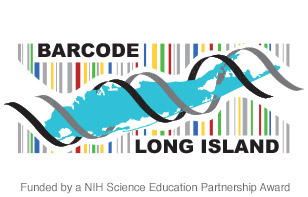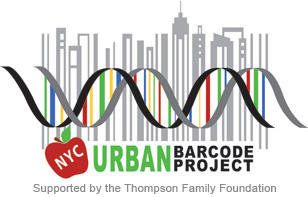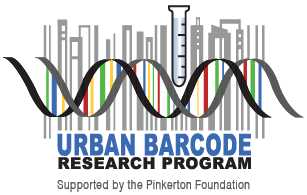
Student Research Partnerships
The National Science Education Standards and education research literature emphasize that students need to be engaged in the process of science—asking questions, forming hypotheses, designing experiments, collecting data, analyzing results, and drawing conclusions. To support this shift in education, the DNALC has developed robust methods that enable students to develop their own research projects while using common approaches. These programs aim to increase the understanding and interest of students in science by as they design and carry out modern molecular research projects.
A DNA barcode is a unique pattern of DNA sequence that identifies each living thing. DNA barcodes can be used to identify and study species in many contexts, from biodiversity studies to forensic studies, making it an ideal common technique for multiple distinct student projects.
www.DNABarcoding101.org
DNA Barcoding 101 includes experimental methods and resources for using DNA barcoding to identify plants or animals or products made from them. The site is also the home base for teachers and mentors participating in Barcode Long Island, Urban Barcode Project, and the Urban Barcode Research Program.
Barcode Long Island
In collaboration with Stony Brook University (SBU), Brookhaven National Laboratory (BNL), and the American Museum of Natural History (AMNH), the DNA Learning Center (DNALC) of Cold Spring Harbor Laboratory announces Barcode Long Island (BLI). With funding from the National Institutes of Health Science Education Partnership Award, the project mission is for students to gain an intuitive understanding of the crucial interdependence between humans and the natural environment. BLI is using DNA barcoding to explore, document, and track the biodiversity on and around Long Island through independent and distributed experiments by student research teams led by trained Long Island educators. BLI provides all the training, equipment, materials, and infrastructure needed to support this large-scale, student-driven research effort.
- Mentors: DNALC-trained HS teachers
- Students: Grades 9-12 in teams of 2-4
- Region/Scope: Biodiversity study of Long Island and/or its surrounding waters (Nassau, Suffolk, Queens, Brooklyn)
- Project Hub: Dolan DNA Learning Center

Urban Barcode Project
In the Urban Barcode Project (UBP), student research teams use DNA barcoding to explore biodiversity in the five boroughs of New York City. The UBP is the first large-scale effort to engage high school students using DNA technology to explore biodiversity in New York City. The Alfred P. Sloan Foundation supported the first round of the UBP from January 2011 through June 2012, and the competition continues today with support from the Thompson Family Foundation. Projects can use DNA barcodes to examine any aspect of the NYC environment.
- Mentors: DNALC-trained HS teachers and research mentors
- Students: Grades 9-12 in teams of 2-4
- Region/Scope: Biodiversity study of NY metropolitan area, detecting endangered species, or food mislabeling
- Project Hub: DNALC NYC at City Tech, Harlem DNA Lab

Urban Barcode Research Program
The Urban Barcode Research Program (UBRP), is an initiative to engage high school students to study biodiversity in NYC supported by the Pinkerton Foundation. Students apply in the spring and interview in the summer. Accepted students take a training course and then conduct independent research projects with Scientist Mentors using DNA Barcoding.
- Mentors: Invited researchers/educators at research institutions
- Students: Grades 9-12
- Region/Scope: Biodiversity study of NY metro area
- Project Hub: DNALC NYC at City Tech, Harlem DNA Lab, and NYC research institutions



